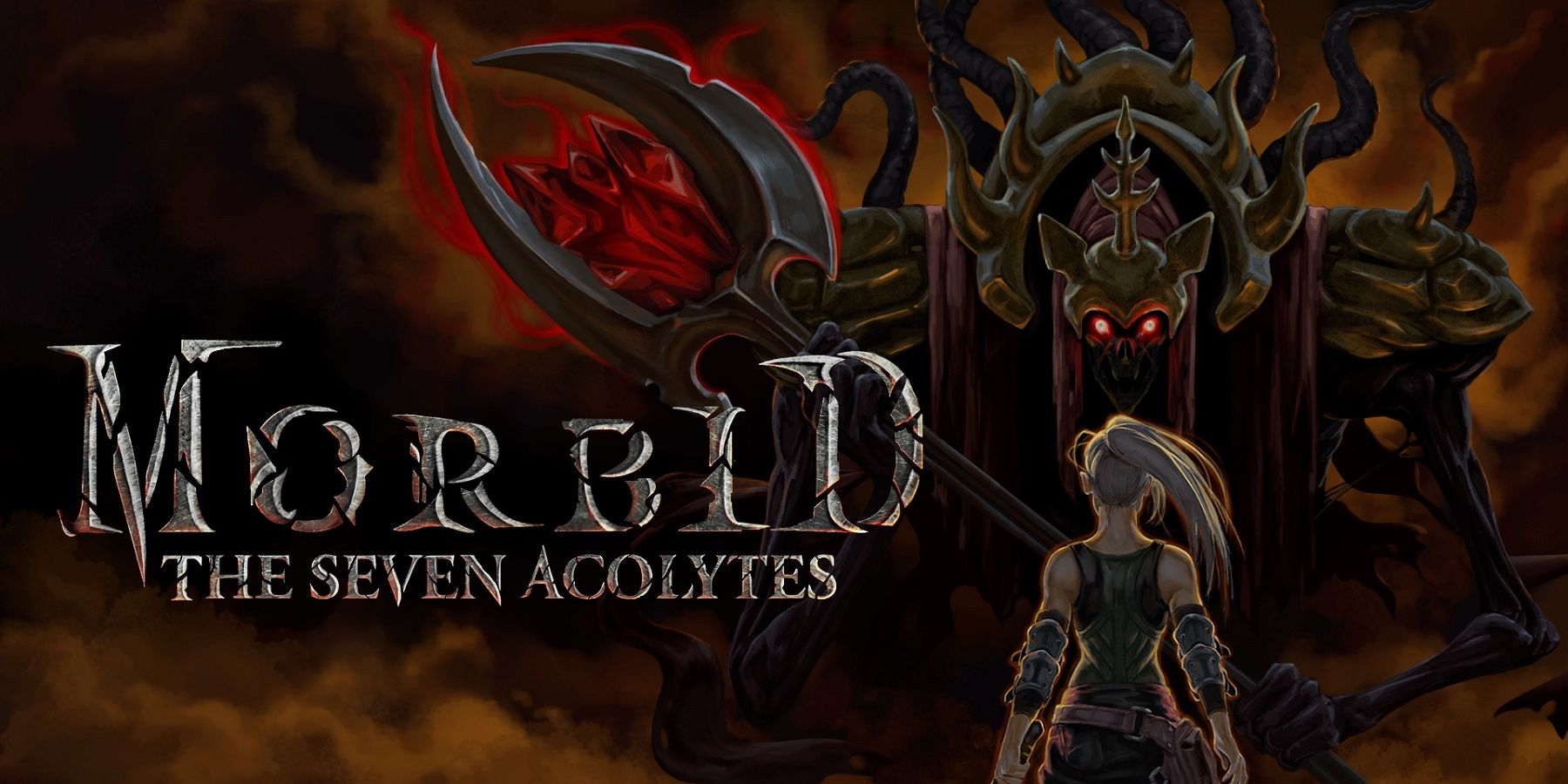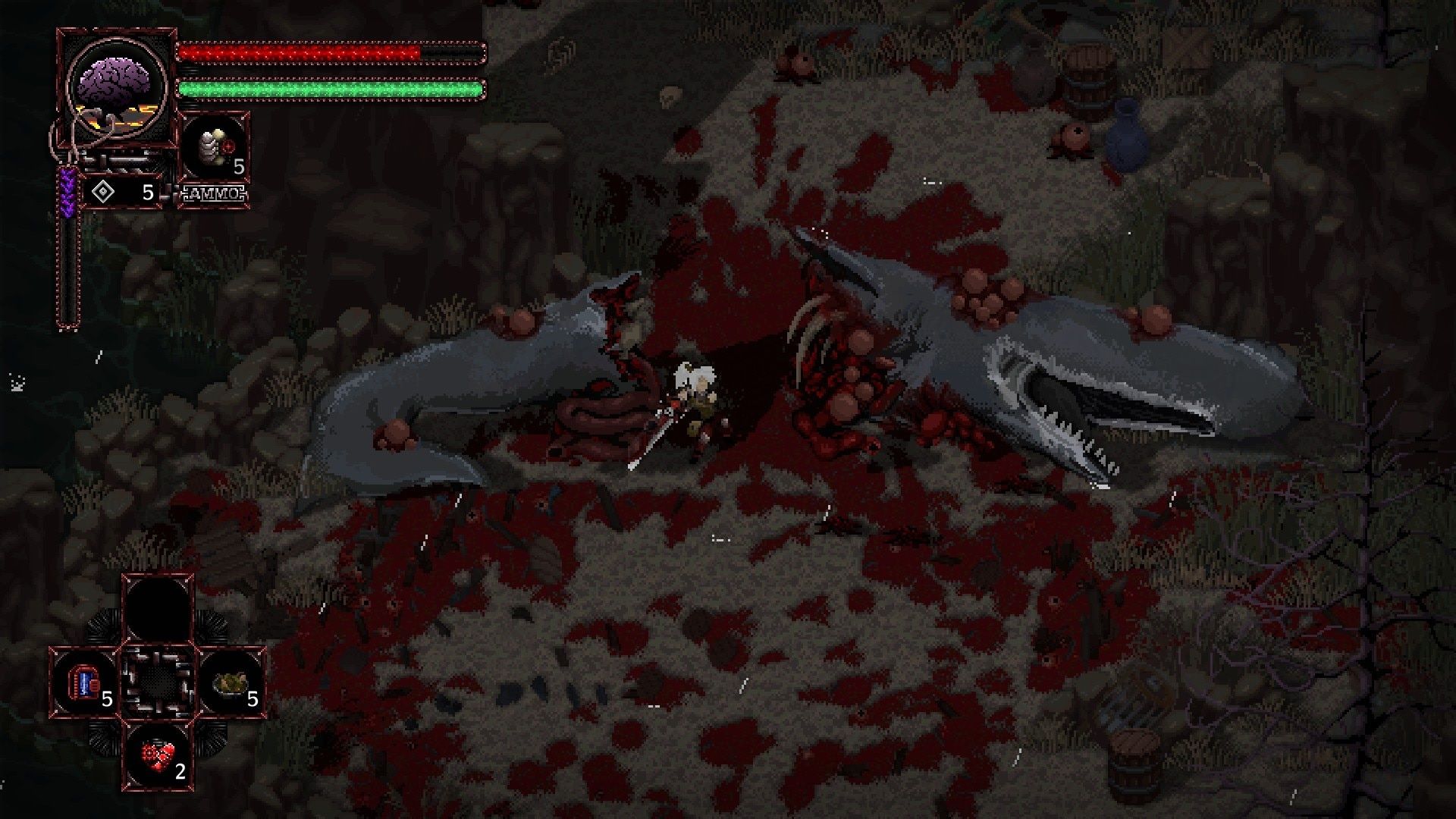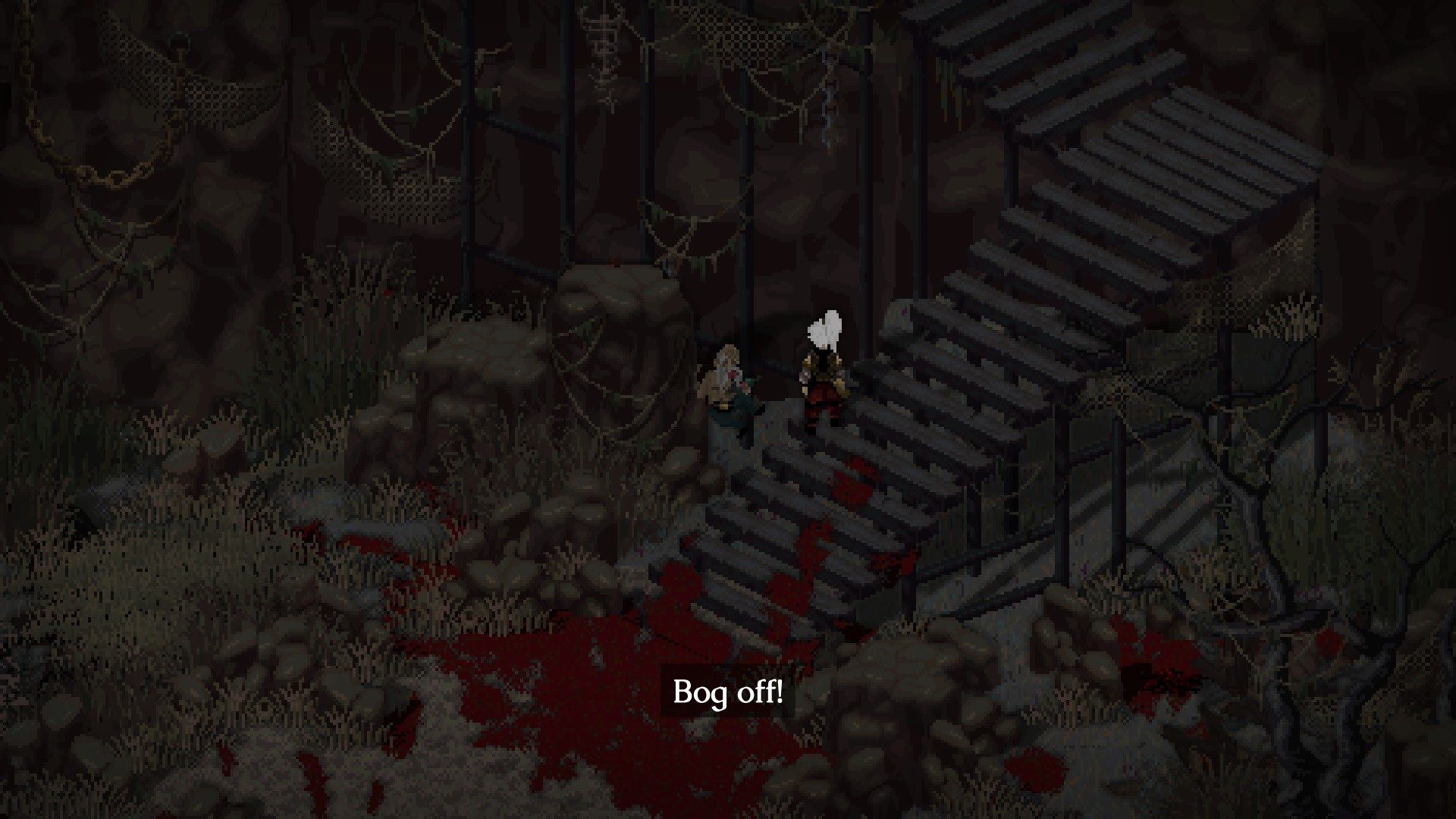
The success of FromSoftware’s Dark Souls series has led to a whole range of tough-as-nails games over the years. The latest release that follows in the footsteps of the likes of Bloodborne and Sekiro: Shadows Die Twice is Morbid: The Seven Acolytes, by developer Still Running and publisher Merge Games.
Just like most Soulslike games, Morbid: The Seven Acolytes prides itself on being incredibly difficult. The hack-and-slash combat plays in a similar way to Bloodborne, which means fighting enemies does not come down to blocking attacks but rather dodging them. The main aim is to avoid incoming damage while getting in a few quick hits before rolling away, conserving as much stamina as possible in each skirmish. It’s a simple premise, though it works surprisingly well and the combat is pretty entertaining even though it's not innovative in any way.
The main attraction in Morbid: The Seven Acolytes comes with its boss battles. There’s a number of great fights with mini-bosses alongside bigger and more taxing enemies. Taking inspiration from Lovecraftian monsters, most of the bosses are tangled messes of tentacles. Each also does enough to differentiate them from the others, ensuring that the boss fights never feel stale - but they do follow the same sort of formula, with the player tasked with dodging incoming attacks that can often kill in a single hit and memorizing the movement patterns to plan out an attack.

In terms of story, Morbid: The Seven Acolytes is once again similar to the see-don't-tell lore of Dark Souls and other famous entries into the genre. The plot is deliberately vague and does its best to not get in the way of a tight gameplay experience, as players take control of a character known as Striver of Dibrom, a warrior that has been training their entire life to defeat mysterious monsters called Gahars. For the most part, the story is told through exploration and talking to various characters. There is not much in the way of a standard story, with players instead able to discover as much about the world as they want. This is mainly done by collecting hidden documents or books on the ground, but it can be ignored completely for those not interested.
In total, there are 25 different weapons to collect in Morbid: The Seven Acolytes and each of them brings a unique fighting style to the player's arsenal. Those who want to be nimble can use smaller swords to be able to dodge more quickly, while larger weapons make the protagonist slower and more cumbersome in exchange for wider hitboxes and more power. Not only does this give players some motivation to actually go out and try to find more weapons than what's already working, but the weapon system also genuinely allows for some experimentation in how to approach the game.

When it comes to presentation, Morbid: The Seven Acolytes takes a pixel art approach that neither impresses much or detracts from the experience. The visual style also leads to many of the environments and levels looking very similar - there’s little to help each area have its own personality, which can drag the game down a little in between its excellent boss battles. Sound design, however, is consistently strong, with some excellent audio effects and a pleasing musical score helping make the journey through the game more memorable.
Morbid: The Seven Acolytes may not be the first title to transfer the Dark Souls formula to an isometric perspective, but it makes it worth the shift in aesthetic. Combat is challenging and fun with boss fights, in particular, providing plenty of thrills. However, the game also suffers from some frustrating moments, largely tied up in its lack of explanation and visual detail, even when it comes to basics like mechanics and leveling up. When Morbid: The Seven Acolytes gets things right, though, it is a great experience thanks to its engrossing gameplay, and it's worth a look for anyone who calls the Soulslike genre home.
Morbid: The Seven Acolytes is available now on Nintendo Switch, PC, PS4, and Xbox One. Screen Rant was provided with a digital Xbox One code for the purposes of this review.
from ScreenRant - Feed https://ift.tt/2VQ1QXF


0 Comments